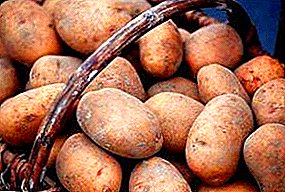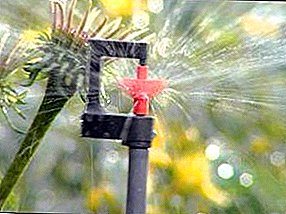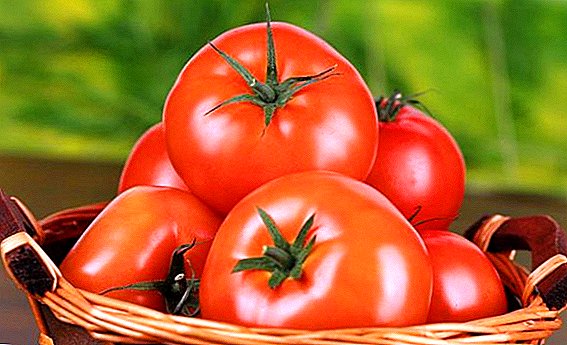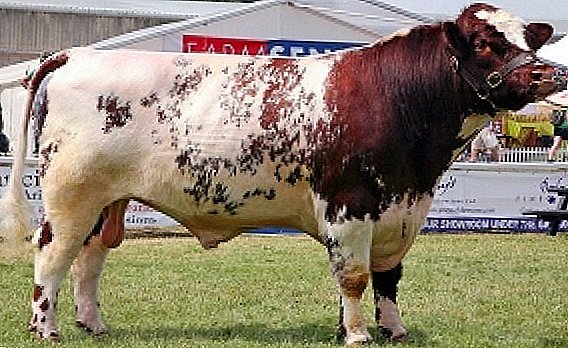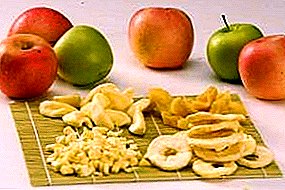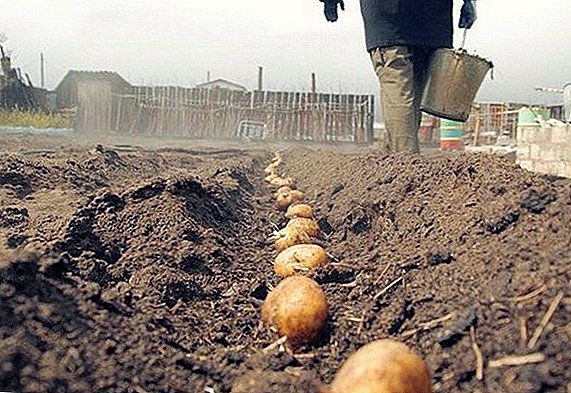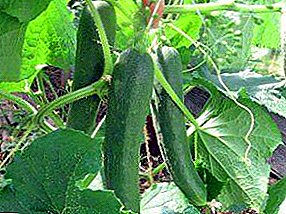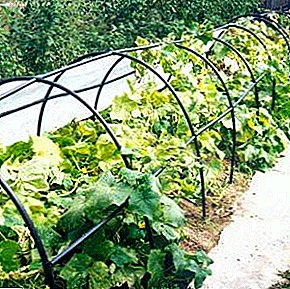
Kiwi potato is one of the rarest varieties. It is unpretentious in cultivation and can grow on any type of soil.
It has an average taste and unusual structure of the root. Peel resembles kiwi fruit, hence the name. Highly resistant to diseases and pests because it is a genetically modified product.
A detailed description of the variety, its characteristics, especially the agrotechnics you will find in our article.
Kiwi Potatoes: variety description
| Grade name | Kiwi |
| general characteristics | universal variety with medium taste |
| Gestation period | 120-130 days |
| Yield | 20 kg with 1 kg of planting material |
| Consumer quality | medium, when cooking, the tubers retain their shape, suitable for mashed potatoes, poorly suitable for frying |
| Recumbency | the good |
| Skin color | tan brown |
| Pulp color | white |
| Preferred growing regions | any |
| Disease resistance | resistant to phytophthora, poorly eaten by the Colorado potato beetle and wireworm |
| Features of growing | The variety loves the sun and systematic watering, loosening of the soil, top dressing |
| Originator | the Kiwi variety was bred by amateur breeders in the city of Zhukov, Kaluga Region. Not passed state tests |
This variety can not be bought in regular stores. Kiwi is very rare subspecies. When creating this variety was involved Genetic Engineering. Kiwi is a genetically modified variety. 
Suitable for growing in almost all regions of Russia. Despite the small amount of planting material, it is often found in other countries - Belarus, Kazakhstan, Lithuania, Ukraine.
In the Russian Federation, Kiwi potatoes are grown in the Krasnodar Territory, Moscow, Yaroslavl, Volgograd, Nizhny Novgorod, Ivanovo, Perm, Kaluga regions.
In growing very unpretentious. Therefore, it is recommended for amateur gardeners. He likes plenty of sun, systematic watering, loosening the soil. Excellent response to the introduction of fertilizing.
Specifications
Bushes varieties high. Depending on the fertility of the soil, they reach a height of 40 to 80 cm. The stem is erect, with a large number of branches. The branches are strong.
Leaflets elongated, emerald hue. Have a highly serrated edge. To touch rough. Have a large number of small hairs. Leaf plate is pronounced brightly. Inflorescences have a bright lilac shade.
Anthocyanin shade is very pronounced. Flowers attract bees and other insects. Kiwi Potatoes - an unusual variety that looks like an exotic fruit. It has elongated fruits with rounded edges.
To the touch potatoes are very rough, similar to velvet. The skin is netted. The flesh is white amber.
Purpose
The pulp is boiled great. Suitable for mashed potatoes. But cooks reviews about this product are unambiguous. Many people like the crumbly structure of the root, excellent elegant skin.
Others do not like too long a cooking period. Grade Kiwi must be cooked for more than 40 minutes. The middle of the vegetable is almost tasteless. Subspecies great for cooking salads and first courses.
We offer to get information about the properties of potatoes: the danger of solanine, the benefits and harms of raw root vegetables, why people eat sprouts and drink potato juice.
The subspecies has excellent productivity. It has good keeping quality. In cool vegetable stores persists until next year. With long-term storage of their taste does not lose.
 Read more about storing potatoes: time, temperature, places, possible problems.
Read more about storing potatoes: time, temperature, places, possible problems.And also, how to store roots in the winter, in the apartment and cellar, on the balcony and in drawers, in the refrigerator and peeled.
A photo
See below: Kiwi potato variety photo





Yield
Refers to late ripening varieties. From the first shoots to technical ripeness, more than 120 days pass. In cooler regions, the ripening period may increase to 130 days.
But most actively growing in sandy soil. The variety is very rare in growing unpretentious. Therefore, 1 kg of planting material costs about 100 rubles. And the increase in yield will greatly affect the increase in profits.
When planting 30x70 cm yield reduction may occur. Since the bushes of this variety are leafy, they need more space. When planting 40x70 cm yield increased by 20%. The best results are shown by the 45x90 cm scheme; the harvest is necessary after the full drying of the tops.
Compare the yield of this variety with others, you can refer to the table below:
| Grade name | Yield |
| Zhukovsky | 20 kg with 1 kg of planting material |
| Kubanka | up to 220 kg / ha |
| Felox | 550-600 c / ha |
| Blue-eyed | up to 500 kg / ha |
| Pretty boy | 170-280 kg / ha |
| Red scarlett | up to 400 kg / ha |
| Borovichok | 200-250 centners / ha |
| Bullfinch | 180-270 c / ha |
| Kamensky | 500-550 c / ha |
| Colomba | 220-420 c / ha |
| Spring | 270-380 c / ha |
Features of growing
Set the stage For landing it is necessary at the end of September. It should be plowed topsoil. The depth of plowing should be 15-18 cm. Manure is brought into loose soil. Phosphorus and potassium are also excellent.
To make potatoes the most nourishing, use nitrogen. The first introduction is made in the autumn, the second - in the beginning of May. Only germinated tubers are planted.
Read more about potato fertilizer: what to feed, when and how to apply, how to do it when planting, which feedings are the best and what are the advantages of mineral fertilizers.
You must use the correct planting scheme, which increases yields. The soil should be free from weeds. Weeds will take away all the necessary minerals. In sod and podzolic soil, planting should be done to a depth of 8-10 cm. In a loamy soil, 6-8 cm depth will do. Depth is calculated from the top of the ridge to the surface of the planting material.
 As for agrotechnical methods, they are standard - hilling, watering, and mulching between rows.
As for agrotechnical methods, they are standard - hilling, watering, and mulching between rows.Read more about whether hilling is necessary for a potato, what it is done with - manually or with the help of a motor-block, whether it is possible to do without weeding and hilling.
Diseases and pests
 Potatoes variety Kiwi resistant to the Colorado potato beetle. The pest does not eat shoots. Insects are scared away by the rough surface of the leaves. On such hairy leaves, it is impossible to lay eggs and hatch larvae.
Potatoes variety Kiwi resistant to the Colorado potato beetle. The pest does not eat shoots. Insects are scared away by the rough surface of the leaves. On such hairy leaves, it is impossible to lay eggs and hatch larvae.
Therefore, pests are moved to the most simple varieties of potatoes, having a glossy surface of the leaves. The variety is not affected by the wireworm. In its structure, the subspecies has bio-cellulose.
Such material pests can not digest. The subspecies is highly resistant to viruses and infections. Not affected by late blight, cancer, Alternaria, fomozom, scab, rot, rhizoctoniosis, fusarium and verticillium wilt.
Variety of potatoes Kiwi received positive reviews of gardeners. Resistant to viruses, diseases and pests. Well responds to the introduction of fertilizing. It is a high-yielding subspecies. It has excellent keeping quality.
In cool vegetable stores persists until next year. Belongs to rare varieties.
We bring to your attention useful information about how to grow potatoes - Dutch technology, the intricacies of working with early varieties, drawing up a business plan for growing potatoes. As well as alternative methods: under the straw, in bags, in barrels, in boxes.
We also suggest that you familiarize yourself with potato varieties that have different ripening terms:
| Middle late | Medium early | Mid-season |
| Vector | Gingerbread Man | Giant |
| Mozart | Fairy tale | Tuscany |
| Sifra | Ilinsky | Yanka |
| Dolphin | Lugovskoy | Purple Haze |
| Crane | Santa | Openwork |
| Rogneda | Ivan da Shura | Desiree |
| Lasock | Colombo | Santana | Aurora | Manifesto | Typhoon | Skarb | Innovator | Alvar | Magician | Crown | Breeze |


